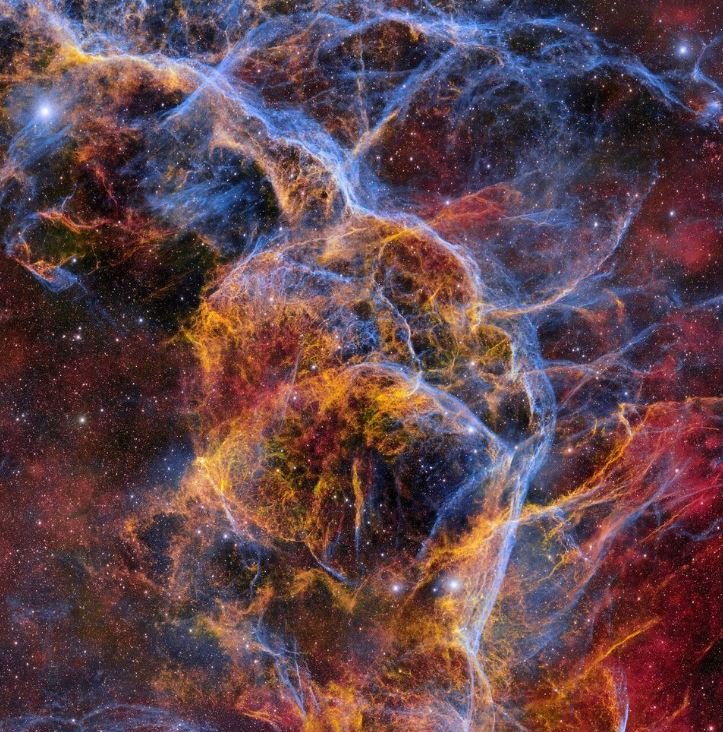Using data collected by the Dark Energy Camera (DECam) on the Victor M. Blanco Telescope at the Cerro Tololo Inter-American Observatory (Chile), a team of astronomers was able to capture a photograph of the Vela supernova remnant (SNR Vela). ). These are the ruins A star that exploded about 11,000 years ago, sending filaments of dust and cosmic gas over a distance of 100 light-years.
The stellar remnant is located about 800 light-years from Earth in the constellation Vela. and is considered one of the closest supernova remnants to Earth.
Astronomers used the camera to photograph several separate images and then combined them in different light spectrums to create a single photo with stunning color and detail.
Researchers also explain: The image is the largest ever released by the device as it has a quality of 1.3 gigapixels i.e. 1.3 billion pixels.
The photo partially demonstrates the potential of DECam, which is about 4 meters wide and has a corrective lens almost a meter in diameter; The red, blue and yellow colors in the image were detected using three different camera filters.
“When the star exploded 11,000 years ago, its outer layers violently ripped away and were blown into the surrounding area, causing a shock wave that can still be seen today. As the shock wave expands into the surrounding region, hot, energetic gas moves away from the explosion point, compressing the interstellar medium and interacting with it, producing the blue and yellow fibrous filaments seen in the image.
Supernova Vela
Observation of the Vela supernova remnant is considered very important for astronomy because it is significantly close to the Earth and makes it possible to study the development of the explosion. Although the event took place 11 thousand years ago filaments of dust and gas continue to slowly disperse in space; The debris also indicates the presence of elements such as calcium, carbon, magnesium, oxygen, among others.
It is worth emphasizing that the celestial body did not completely disintegrate: after the explosion, its core turned into a neutron star. The neutron star called Pulsar Vela is visible in the lower left of the image and is a relatively faint cosmic object compared to other stellar structures.
“The striking reds, yellows and blues in this image were achieved using three DECam filters, each collecting a specific color of light. Separate images were captured at each filter and then used to create this high-resolution color image showing complex web-like filaments winding their way through the expanding gas cloud.” stacked on top of each other.” The statement continues.
Did you like the content? Always stay up to date with the latest studies on astronomy at TecMundo. If you wish, take the opportunity to see the James Webb Telescope dive into the Crab Nebula.
Source: Tec Mundo
I’m Blaine Morgan, an experienced journalist and writer with over 8 years of experience in the tech industry. My expertise lies in writing about technology news and trends, covering everything from cutting-edge gadgets to emerging software developments. I’ve written for several leading publications including Gadget Onus where I am an author.













